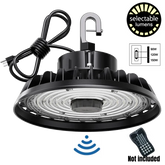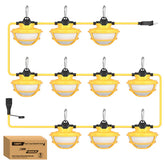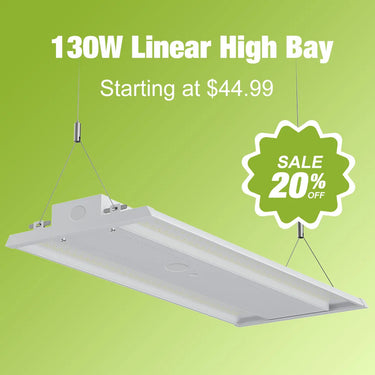How to Select LED High Bay Lights?
by
NioJaydon
28 Jun 2025
Selecting LED high bay lights requires comprehensive consideration of multiple factors. The following are key points:
Lighting Parameters
-
Luminous Flux
Luminous flux determines the brightness of the lamp, typically measured in lumens (lm). For high bay lights, according to the size of the usage scenario and lighting requirements, products with a luminous flux ranging from 2,000lm to 10,000lm or even higher are generally needed. For large-area places such as large warehouses and workshops, LED high bay lights with high luminous flux should be chosen. -
Color Temperature
Color temperature affects the light color and atmosphere. The color temperature of high bay lights is generally between 4,000K and 6,500K. Warm white light at around 4,000K is soft and suitable for places that need to create a comfortable environment; white light at around 6,500K is bright and clear, ideal for work areas with high visual requirements. -
Color Rendering Index (CRI)
The color rendering index (CRI) reflects the light's ability to restore object colors. High bay lights generally require a CRI of 80 or above. For places with high color discrimination requirements, such as fine processing workshops and color printing workshops, products with a higher CRI should be selected.
Lamp Quality
-
LED Beads
LED beads are the core components of LED high bay lights, and their quality directly affects the lamp's performance and lifespan. Beads from well-known brands such as Cree and Osram have higher luminous efficiency, better stability, and a longer service life. -
Driver Power Supply
The driver power supply provides stable current and voltage to the LED beads. High-quality driver power supplies should have functions such as high efficiency, high power factor, overvoltage protection, overcurrent protection, and short-circuit protection, which can ensure the stable operation of the lamp and extend its lifespan. -
Heat Dissipation Performance
LED lights generate heat during operation, and good heat dissipation is crucial to ensure the lamp's performance and lifespan. Check whether the heat dissipation fins of the lamp are large and numerous enough, and whether the heat dissipation material is aluminum alloy with good thermal conductivity.
Specifications and Installation
-
Lamp Size
Choose a high bay light of appropriate size according to the installation location and space size. For example, smaller high bay lights can be selected for low basements or small warehouses, while larger-sized and higher-power high bay lights are suitable for tall factories, gymnasiums, etc. -
Installation Method
Common installation methods include hoisting, ceiling mounting, and wall mounting. Select a suitable installation method based on the actual installation location and usage requirements. For example, hoisting can be used in workshops with high ceilings, and wall mounting can be used where there are suitable installation positions on the wall.
Other Factors
-
Protection Level
Choose high bay lights with appropriate protection levels according to different usage environments. In humid, dusty, or corrosive gas environments (such as mines and chemical workshops), high bay lights with a higher protection level should be selected. Generally, a protection level of IP65 or above is required. -
Brand and After-Sales Service
Choose LED high bay lights from well-known brands (such as YXL Electronics), which offer more guaranteed product quality, performance, and after-sales service. YXL Electronics has a good market reputation, product warranty period, and after-sales service content, providing 5-year free maintenance and replacement services, a 24-hour + 7-day maintenance response time, etc.
Tags:

















